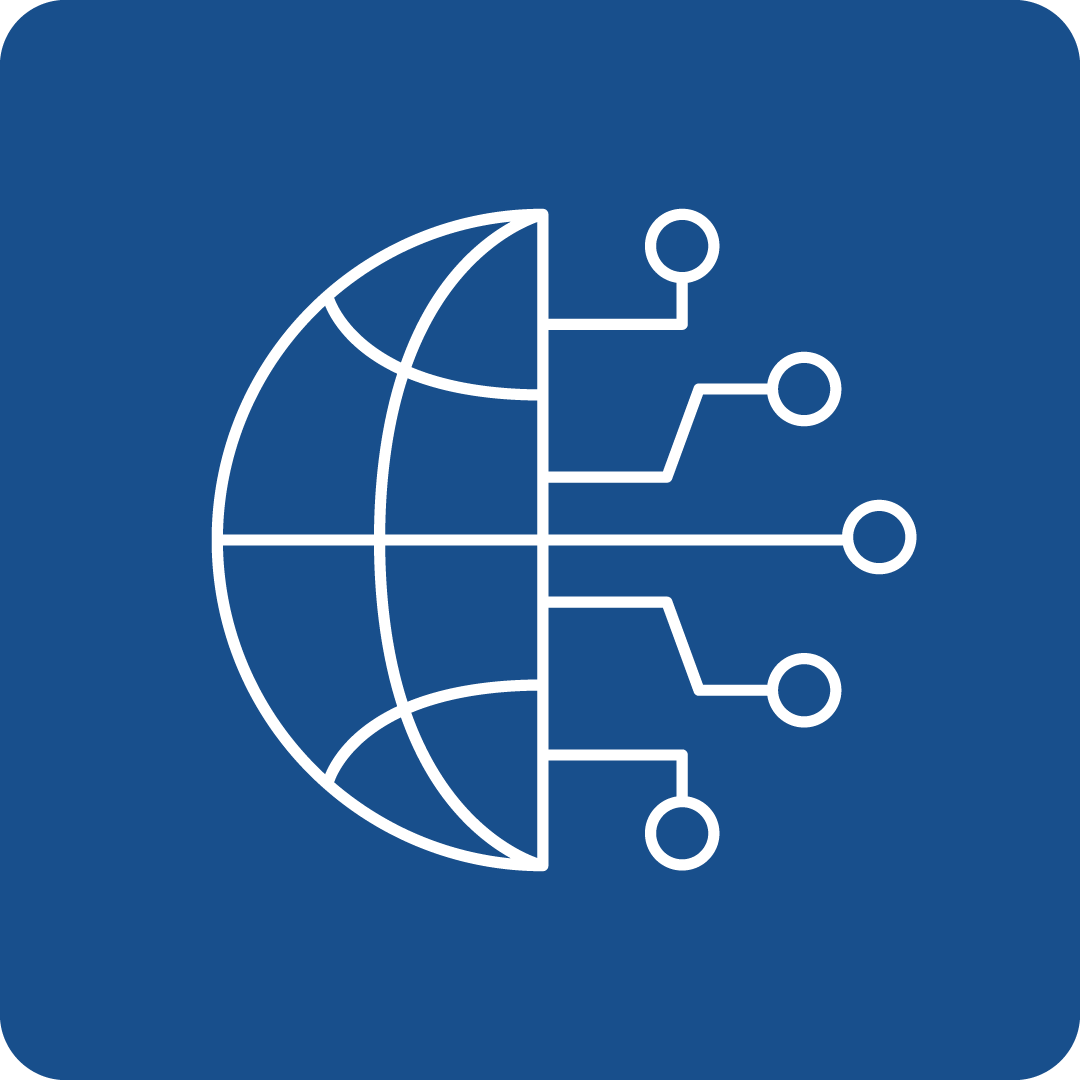Filter Search for grants
Call Navigation
Deadline expired
The deadline for this call has expired.
Call key data
Digitalisation of conformity assessment procedures of medical devices and in vitro diagnostic medical devices
Funding Program
Horizon Europe: Cluster 1 - Health
Call number
HORIZON-HLTH-2025-01-IND-02
deadlines
Opening
22.05.2025
Deadline
16.09.2025 17:00
Funding rate
100%
Call budget
€ 4,000,000.00
Estimated EU contribution per project
€ 4,0000,00.00
Link to the call
Link to the submission
Call content
short description
This topic aims at supporting activities that are enabling or contributing to one or several expected impacts of destination “Maintaining an innovative, sustainable, and competitive EU health industry”.
Call objectives
The regulations on Medical Devices (MDR) and In Vitro Diagnostic Medical Devices (IVDR) have introduced stricter regulatory requirements in view of ensuring a high level of patient safety and public health. The implementation of the new regulatory requirements still remains a challenge for manufacturers. SMEs face particular challenges as they have limited resources to adapt to the new framework. One of the main issues reported by manufacturers is the complexity and perceived unpredictability of the conformity assessment procedure involving a Notified Body.
The Medical Device Coordination Group (MDCG) assists the Commission and the Member States in ensuring a harmonised implementation of the MDR and IVDR, notably through the development of guidance and templates. Notably, the conformity assessment procedures are still based on continuous exchange of highly complex technical documentation in an electronic format (e.g., pdf or excel files) between the key actors of NBs and manufacturers, requiring several iterations between them. Further digitalisation of this process (from document to data-driven processes) can bring greater efficiency, accuracy, and transparency and lead to a more predictable and harmonised assessment process. This is expected to reduce the administrative burden as well as certification timelines and facilitate the conformity assessment procedure for manufacturers, particularly SMEs. In turn, this will contribute to maintaining the EU as a business-friendly environment for all manufacturers, which will ultimately benefit patients. For example, digitalisation can lead to simplification through the reduction of administrative burden, use of a single-entry point for all exchange of information. If relevant, applicants may liaise with an ongoing study on supporting the monitoring of the availability of medical devices in the EU market. Potential improvements related to digitalisation can include pre-defining mandatory data elements, the possibility of getting alerts on whether data is complete, the identification of missing parts and inconsistencies and a reduction of error rates in this regard. Overall improved communication would be anticipated with digitalisation.
Any actions as part of the proposal will be performed under the current regulatory framework and will not involve changing MDR/IVDR requirements. Proposals should present a major step towards digitalisation in Europe and Associated Countries. Governance of a potential IT infrastructure developed in Europe and Associated Countries is outside the scope of the topic.
read more
Expected effects and impacts
The proposals should cover all the following points:
- all steps of the MDR/IVDR procedures, from manufacturer’s preparation of technical documentation and other pre-application activities for certification to issuance of a MDR/IVDR certificate by a NB;
- all actors involved in the conformity assessment procedure, including manufacturers, NBs, EU reference laboratories, expert panels of medical devices, as well as agencies involved in the consultation activities;
- a good representation of different NBs, including representation from small and large NBs, public and private NBs and a representative mix focusing on medical devices and in vitro diagnostic medical devices. The proposal should put a strong focus on consensus building activities between the different stakeholders involved.
The proposals should address all the following activities:
- Feasibility study
- Review existing initiatives aimed at digitalising MDR/IVDR conformity assessment procedures, or part thereof, and investigate digitalisation of conformity assessment/approval procedures for devices in other jurisdictions (e.g., US Food and Drug Administration). Consider lessons learned from digitalising conformity assessment procedures in other areas than medical devices.
- Examine basic processes/workflows established by individual NBs.
- Identify main steps of the conformity assessment procedure to be digitalised, actors involved, and essential elements and requirements to be considered prior to digitalisation.
- Collect and analyse feedback from main stakeholders on challenges and feasibility of the digitalisation process, identify interoperability with existing workflows used by manufacturers and/or NBs.
- Determine technical specifications required for the digitalisation as well as the possible options regarding digital transformation platforms.
- Analyse facilitating factors, main challenges, possible solutions and required resources.
- Pilot
- Develop a pilot for the whole or part of the MDR/IVDR conformity assessment procedure, including Key Performance Indicators (KPI). This will involve collaboration with relevant stakeholders, including NBs, manufacturers, the European Commission and other involved parties.
- Develop a dedicated platform to run the pilot or identify an existing platform suitable for the pilot.
- Roadmap towards digitalisation
- Based on the lessons learned from the pilot, identify different steps to scale-up the pilot in order to digitalise MDR/IVDR conformity assessment procedures, or part of them. Identify associated challenges and possible solutions to address these.
- Present a roadmap to the piloted approach, including possible alternatives, covering actors involved and resources needed.
read more
Expected results
Proposals under this topic should aim to deliver results that are directed, tailored towards and contributing to all the following expected outcomes:
- Notified Bodies (NBs), device developers and manufacturers adopt digitalisation in their conformity assessment procedures thus facilitating device development. As certain steps of conformity assessment do also require involvement of regulatory authorities (e.g. consultation of medicines authorities), digitalisation of these steps would also bring relevant benefit;
- Device developers and manufacturers have access to digitalised conformity assessment procedures. These procedures will become more efficient, less onerous, and more predictable, which will reduce costs and shorten the time to market access;
- Device developers and manufacturers, in particular small and medium-sized enterprises (SMEs), can direct a larger part of their resources towards the research and development of innovative devices.
read more
Eligibility Criteria
Regions / countries for funding
Moldova (Moldova), Albania (Shqipëria), Armenia (Հայաստան), Bosnia and Herzegovina (Bosna i Hercegovina / Босна и Херцеговина), Canada, Faeroes (Føroyar / Færøerne), Georgia (საქართველო), Iceland (Ísland), Israel (ישראל / إِسْرَائِيل), Kosovo (Kosova/Kosovë / Косово), Montenegro (Црна Гора), New Zealand (Aotearoa), North Macedonia (Северна Македонија), Norway (Norge), Serbia (Srbija/Сpбија), Tunisia (تونس /Tūnis), Türkiye, Ukraine (Україна), United Kingdom
eligible entities
EU Body, Education and training institution, Non-Profit Organisation (NPO) / Non-Governmental Organisation (NGO), Other, Private institution, incl. private company (private for profit), Public Body (national, regional and local; incl. EGTCs), Research Institution incl. University, Small and medium-sized enterprise (SME)
Mandatory partnership
Yes
Project Partnership
To be eligible for funding, applicants must be established in one of the following countries:
- the Member States of the European Union, including their outermost regions
- the Overseas Countries and Territories (OCTs) linked to the Member States
- countries associated to Horizon Europe - see list of particpating countries
Only legal entities forming a consortium are eligible to participate in actions provided that the consortium includes, as beneficiaries, three legal entities independent from each other and each established in a different country as follows:
- at least one independent legal entity established in a Member State; and
- at least two other independent legal entities, each established in different Member States or Associated Countries.
In recognition of the opening of the US National Institutes of Health’s programmes to European researchers, any legal entity established in the United States of America is eligible to receive Union funding.
Coordinators of projects must be legal entities established in an EU Member State or Associated Country.
Any legal entity, regardless of its place of establishment, including legal entities from non-associated third countries or international organisations (including international European research organisations) is eligible to participate (whether it is eligible for funding or not), provided that the conditions laid down in the Horizon Europe Regulation have been met, along with any other conditions laid down in the specific call topic.
A ‘legal entity’ means any natural or legal person created and recognised as such under national law, EU law or international law, which has legal personality and which may, acting in its own name, exercise rights and be subject to obligations, or an entity without legal personality.
other eligibility criteria
Specific cases:
- Affiliated entities (i.e. entities with a legal or capital link to a beneficiary which participate in the action with similar rights and obligations to the beneficiaries, but which do not sign the grant agreement and therefore do not become beneficiaries themselves) are allowed, if they are eligible for participation and funding.
- Associated partners (i.e. entities which participate in the action without signing the grant agreement, and without the right to charge costs or claim contributions) are allowed, subject to any conditions regarding associated partners set out in the specific call conditions.
- Entities which do not have legal personality under their national law may exceptionally participate, provided that their representatives have the capacity to undertake legal obligations on their behalf, and offer guarantees to protect the EU’s financial interests equivalent to those offered by legal persons.
- Legal entities created under EU law (EU bodies) including decentralised agencies may be part of the consortium, unless provided for otherwise in their basic act.
- International European research organisations are eligible to receive funding. International organisations with headquarters in a Member State or Associated Country are eligible to receive funding for ‘Training and mobility’ actions or when provided for in the specific call/topic conditions. Other international organisations are not eligible to receive funding, unless provided for in the specific call/topic conditions, or if their participation is considered essential for implementing the action by the granting authority.
- Joint Research Centre (JRC)— Where provided for in the specific call conditions, applicants may include in their proposals the possible contribution of the JRC but the JRC will not participate in the preparation and submission of the proposal. Applicants will indicate the contribution that the JRC could bring to the project based on the scope of the topic text. After the evaluation process, the JRC and the consortium selected for funding may come to an agreement on the specific terms of the participation of the JRC. If an agreement is found, the JRC may accede to the grant agreement as beneficiary requesting zero funding or participate as an associated partner, and would accede to the consortium as a member.
- Associations and interest groupings — Entities composed of members (e.g. European research infrastructure consortia (ERICs)) may participate as ‘sole beneficiaries’ or ‘beneficiaries without legal personality’. However, if the action is in practice implemented by the individual members, those members should also participate (either as beneficiaries or as affiliated entities, otherwise their costs will NOT be eligible.
- EU restrictive measures — Entities subject to EU restrictive measures under Article 29 of the Treaty on the European Union (TEU) and Article 215 of the Treaty on the Functioning of the EU (TFEU) as well as Article 75 TFEU, are not eligible to participate in any capacity, including as beneficiaries, affiliated entities, associated partners, third parties giving in-kind contributions, subcontractors or recipients of financial support to third parties (if any).
- Legal entities established in Russia, Belarus, or in non-government controlled territories of Ukraine — Given the illegal invasion of Ukraine by Russia and the involvement of Belarus, there is currently no appropriate context allowing the implementation of the actions foreseen in this programme with legal entities established in Russia, Belarus, or in non-government controlled territories of Ukraine. Therefore, even where such entities are not subject to EU restrictive measures, such legal entities are not eligible to participate in any capacity. This includes participation as beneficiaries, affiliated entities, associated partners, third parties giving in-kind contributions, subcontractors or recipients of financial support to third parties (if any). Exceptions may be granted on a case-by-case basis for justified reasons.
With specific regard to measures addressed to Russia, following the adoption of the Council Regulation (EU) 2024/1745 of 24 June 2024 (amending Council Regulation (EU) No 833/2014 of 31 July 2014) concerning restrictive measures in view of Russia’s actions destabilising the situation in Ukraine, legal entities established outside Russia but whose proprietary rights are directly or indirectly owned for more than 50% by a legal person, entity or body established in Russia are also not eligible to participate in any capacity. - Measures for the protection of the Union budget against breaches of the principles of the rule of law in Hungary — Following the Council Implementing Decision (EU) 2022/2506, as of 16 December 2022, no legal commitments can be entered into with Hungarian public interest trusts established under the Hungarian Act IX of 2021 or any entity they maintain. Affected entities may continue to apply to calls for proposals and can participate without receiving EU funding, as associated partners, if allowed by the call conditions. However, as long as the Council measures are not lifted, such entities are not eligible to participate in any funded role (beneficiaries, affiliated entities, subcontractors, recipients of financial support to third parties, etc.).In case of multi-beneficiary grant calls, applicants will be invited to remove or replace that entity in any funded role and/or to change its status into associated partner. Tasks and budget may be redistributed accordingly.
Additional information
Topics
Relevance for EU Macro-Region
EUSAIR - EU Strategy for the Adriatic and Ionian Region, EUSALP - EU Strategy for the Alpine Space, EUSBSR - EU Strategy for the Baltic Sea Region, EUSDR - EU Strategy for the Danube Region
UN Sustainable Development Goals (UN-SDGs)
![]()
Additional Information
Applications must be submitted electronically via the Funders & Tenders Portal electronic submission system (accessible via the topic page in the Search Funding & Tenders section). Paper submissions are NOT possible.
Applications must be submitted using the forms provided inside the electronic submission system (not the templates available on the topic page, which are only for information). The structure and presentation must correspond to the instructions given in the forms.
Applications must be complete and contain all parts and mandatory annexes and supporting documents.
The application form will have two parts:
- Part A (to be filled in directly online) contains administrative information about the applicant organisations (future coordinator and beneficiaries and affiliated entities), the summarised budget for the proposal and call-specific questions;
- Part B (to be downloaded from the Portal submission system, completed and then assembled and re-uploaded as a PDF in the system) contains the technical description of the project.
Annexes and supporting documents will be directly available in the submission system and must be uploaded as PDF files (or other formats allowed by the system).
The limit for a full application (Part B) is 33 pages.
Eligible costs will take the form of a lump sum as defined in the Decision of 7 July 2021 authorising the use of lump sum contributions under the Horizon Europe Programme – the Framework Programme for Research and Innovation (2021-2027) – and in actions under the Research and Training Programme of the European Atomic Energy Community (2021-2025). It is mandatory to submit a detailed budget table using the template available in the Submission system.
Call documents
Horizon Europe Work Programme 2025 Cluster 1 - HealthHorizon Europe Work Programme 2025 Cluster 1 - Health(1200kB)
Contact
To see more information about this call, you can register for free here
or log in with an existing account.
Log in
Register now


